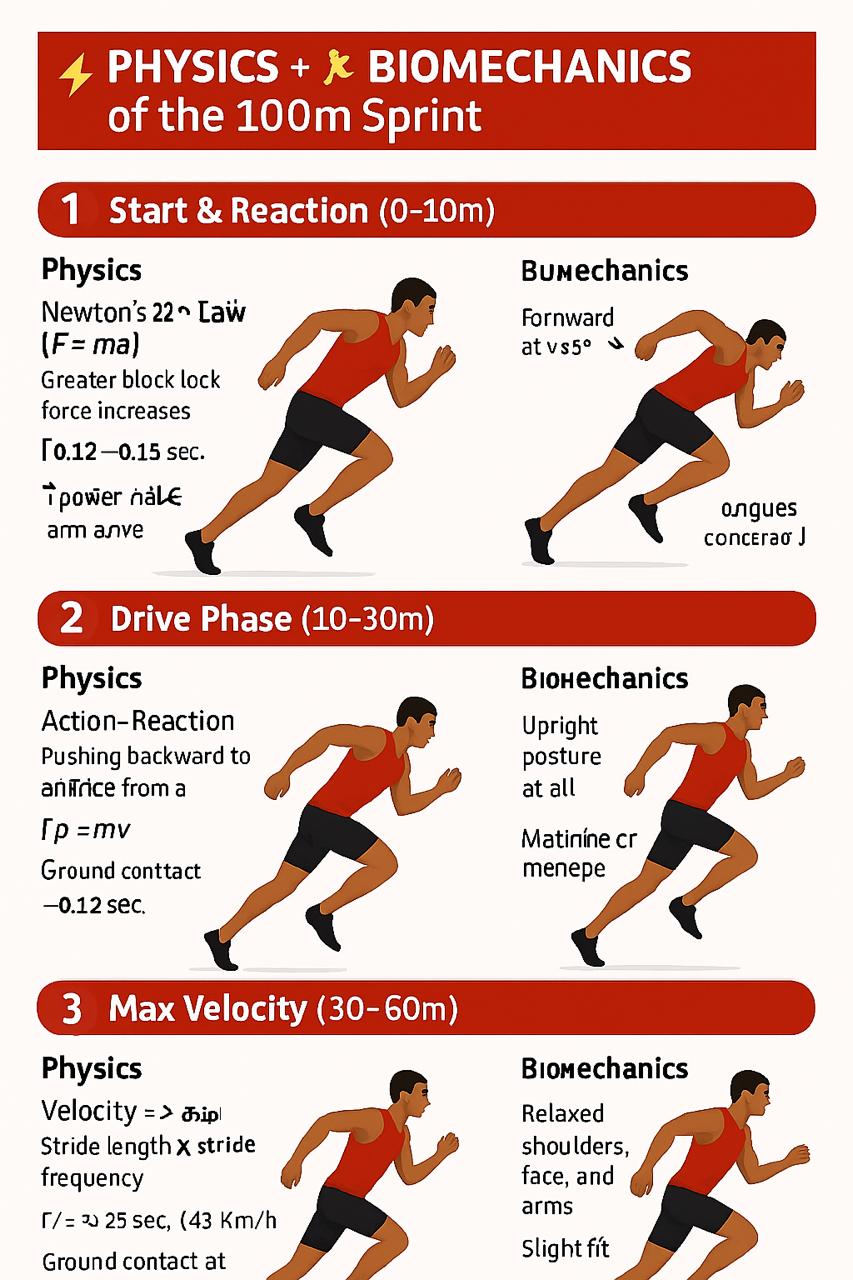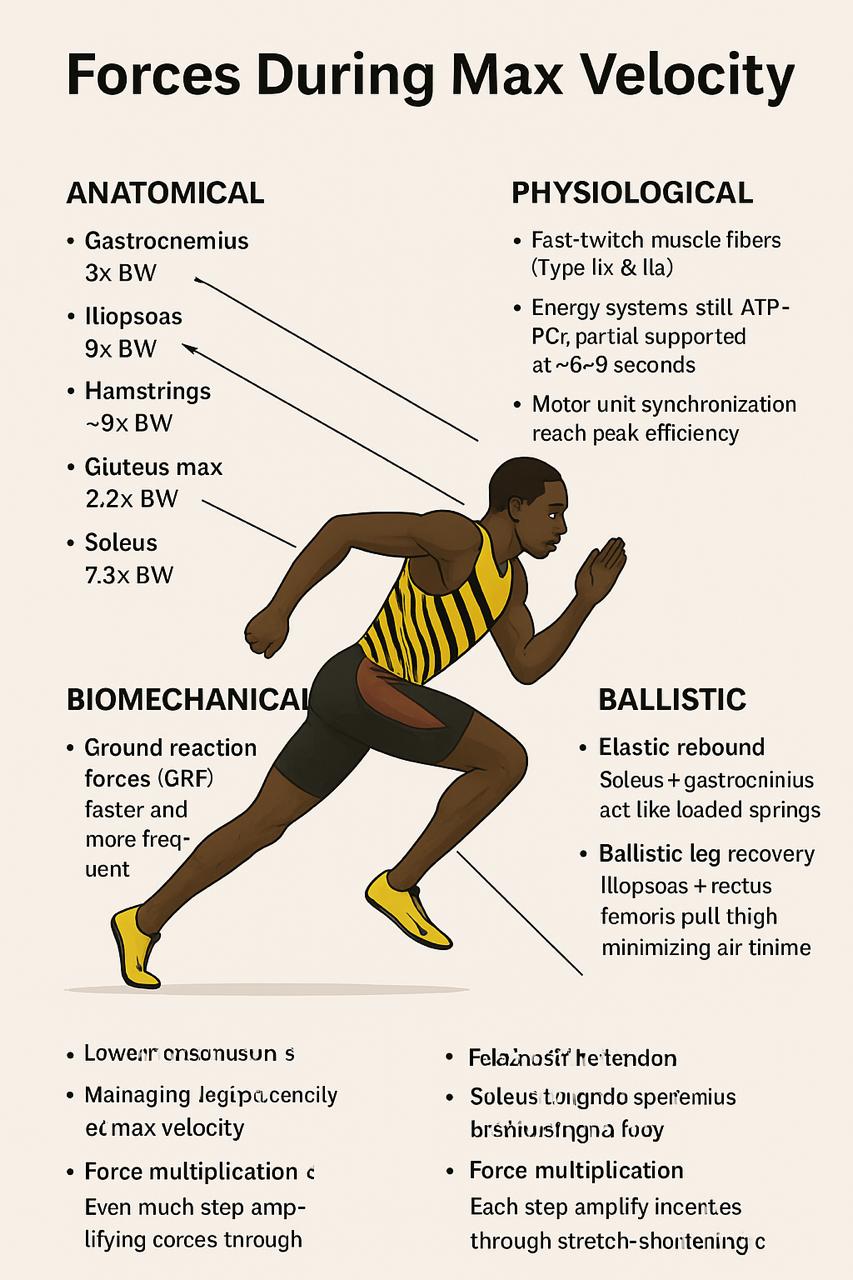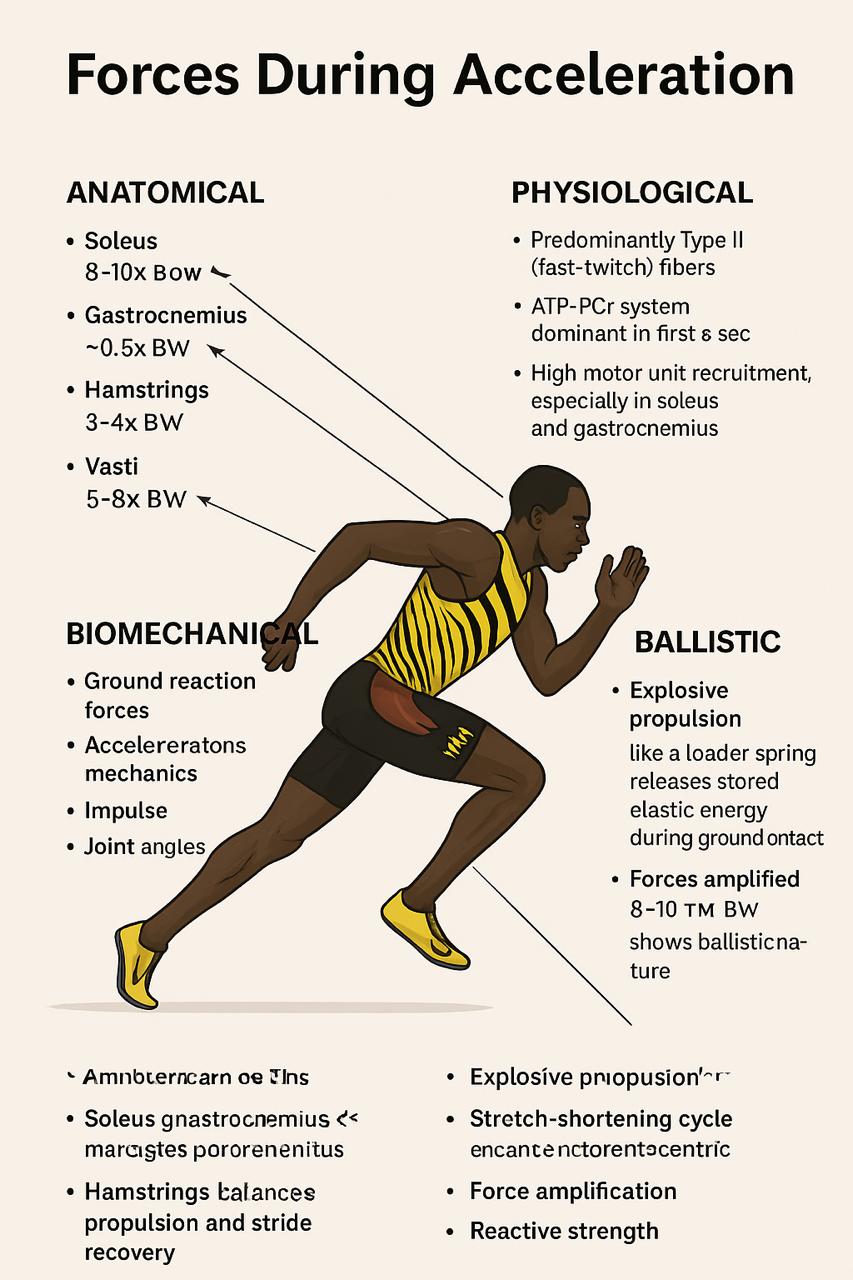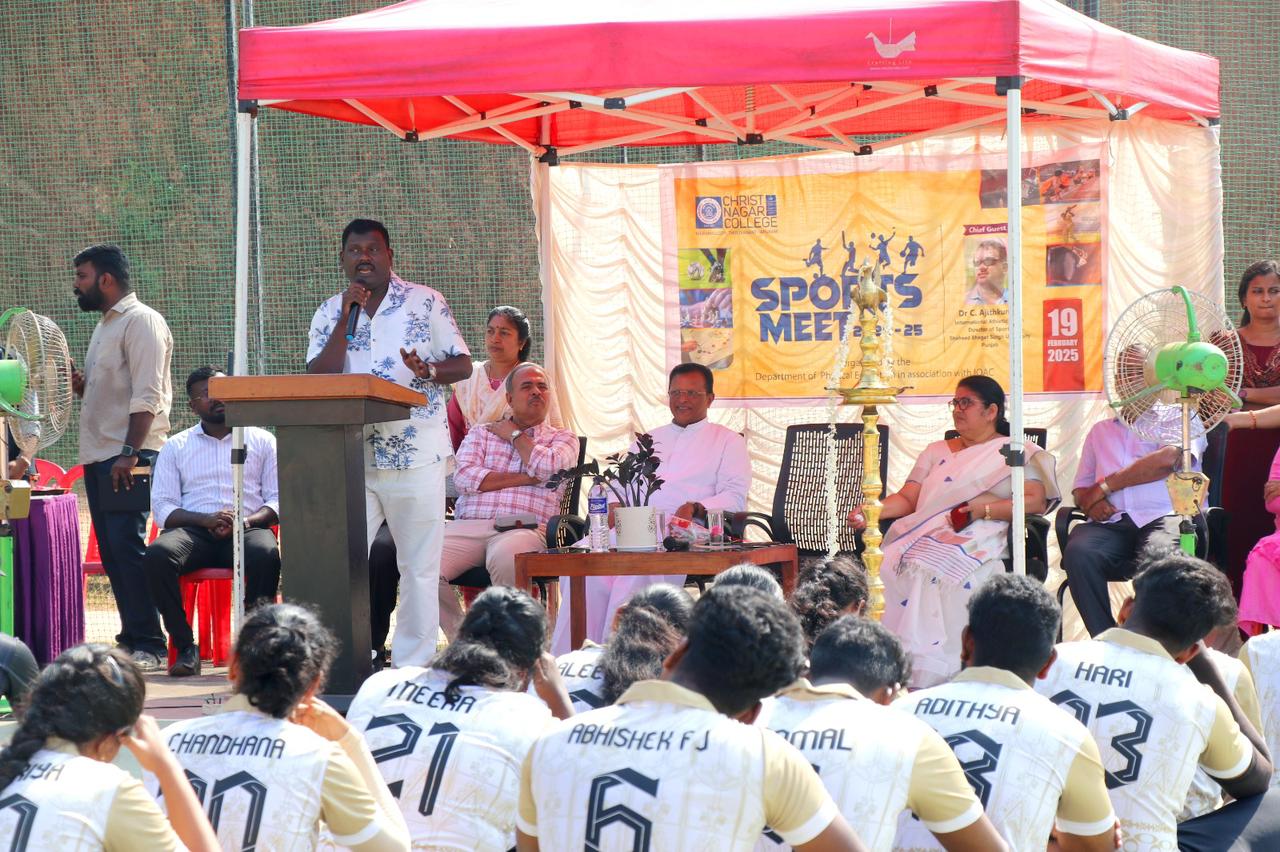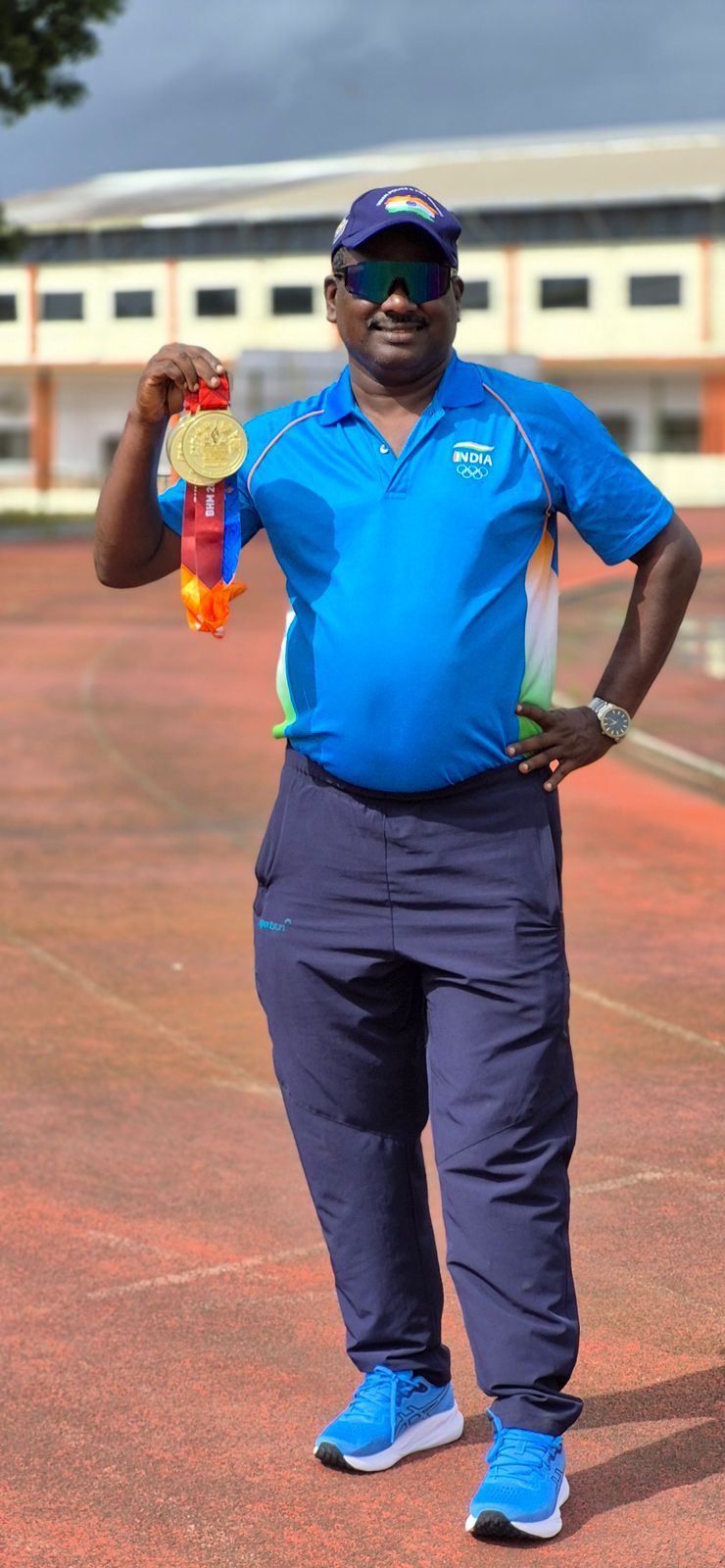The Science of the 100m Sprint - Explained by Coach Dr. C Ajithkumar
The 100m sprint is often called the "purest test of speed." But behind those 10 seconds lies a world of Physics and Biomechanics working together. Let's break it down step by step.
1. The Start (0-10m)
Physics: Newton's 2nd Law (F = ma) rules here. The sprinter must apply maximum force on the blocks to accelerate. Elite sprinters push with forces 4-5 times their body weight.
Biomechanics: The body leans ~45°, hips, knees, and ankles extend explosively in "triple extension," while arms drive powerfully to balance the movement. Reaction time (0.12-0.15s) is crucial -- anything faster is a false start.
2. The Drive Phase (10-30m)
Physics: Newton's 3rd Law (Action-Reaction) dominates. Every backward push into the track propels the body forward. Momentum (p = mv) builds with each stride.
Biomechanics: Sprinters stay low with a strong forward lean, powerful piston-like knee drive, and increasing stride length. Ground contact (~0.12s) allows horizontal force generation.
3. Maximum Velocity (30-60m)
Physics: Velocity = Stride Length × Stride Frequency. Elite sprinters reach ~12 m/s (43 km/h).
Biomechanics: Upright posture, tall hips, and efficient "front-side mechanics" (legs cycling like wheels). Arms remain compact and relaxed. Ground contact shortens to 0.08-0.09s.
4. Speed Maintenance (60-100m)
Physics: Air resistance and muscle fatigue cause deceleration. Kinetic energy (½mv2) peaks -- efficiency decides the outcome.
Biomechanics: Relaxed shoulders, tall hips, and elastic tendon energy recycling maintain speed. Tension wastes energy and slows rhythm.
5. The Forces & Numbers Behind It
- Stride Length: 2.4-2.7m (men), 2.1-2.4m (women)
- Stride Frequency: 4.5-5 steps per second
- Ground Reaction Force: 4-5× body weight (~1000N per step)
- Ground Contact Time: 0.08-0.12 sec
- Flight Time: 0.12-0.14 sec
Conclusion by Coach Dr. C Ajithkumar
The 100m sprint is applied physics in motion.
- Physics explains the forces, acceleration, momentum, and energy.
- Biomechanics explains how the body applies those forces with technique and efficiency.
Together, they compress into 10 seconds of explosive power -- the reason why sprinting is both an art and a science.

